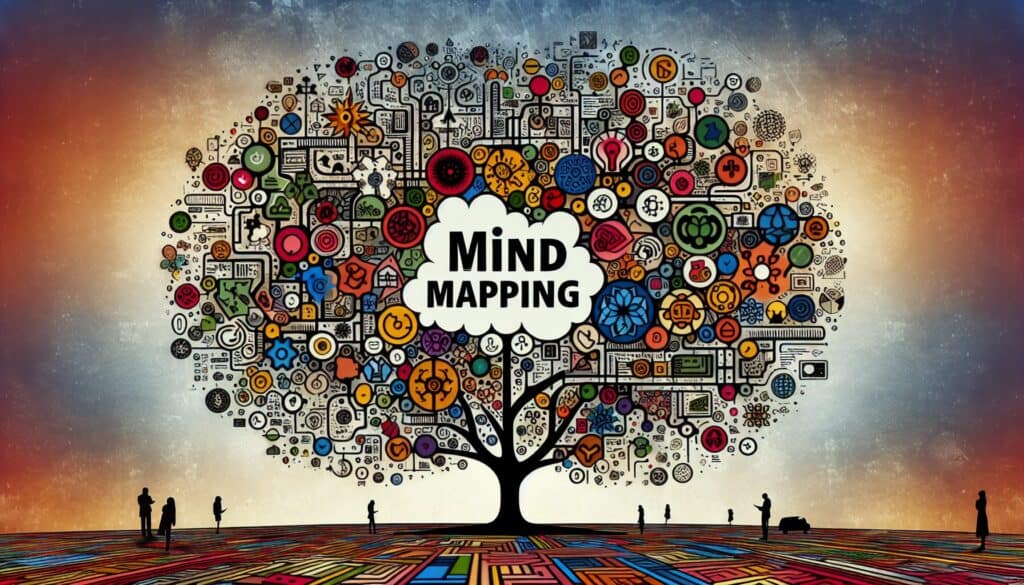围绕一个中心主题,直观地组织信息、想法和概念,促进头脑风暴、学习和解决问题。
- 方法: 工程, 质量
思维导图

思维导图
- 集思广益, 创造力, 设计思维, 构思, 创新, 项目管理, 研究与开发, 以使用者為中心的設計, 视觉设计
目标
如何使用
- 从中心思想或关键词开始。相关的想法、单词和概念以非线性、图形化的方式从中心分支出来,利用颜色、图像和关键词产生联想。
优点
- 提高创造力和想法的产生;利用视觉线索改善记忆和回忆;有助于看到不同信息之间的联系和关系;灵活适应各种主题。
缺点
- 如果添加过多信息,可能会变得杂乱无章,难以阅读;对于喜欢线性思维的人来说,可能过于无序;效果取决于个人的视觉思维能力。
类别
- 构思, 解决问题, 产品设计, 项目管理
最适合:
- 集思广益、记笔记、规划项目、研究复杂课题、整理思路。
心智图法作为一种可视化思维工具,主要应用于教育、项目管理和工程设计等不同领域,促进团队之间的协作创造。这种方法在产品开发的构思阶段尤为有用,来自不同领域的利益相关者(如设计师、工程师、营销人员和最终用户)都会参与到最初的头脑风暴会议中,从而让各种想法浮出水面,并以连贯的方式记录下来。软件开发和医疗保健等行业使用心智图法将错综复杂的流程分解为易于管理的组件,从而更好地规划和执行项目,而教育工作者则依靠心智图法为学生简化复杂的科目。心智图法的适应性还使其可以用于敏捷方法中,在敏捷方法中,迭代开发需要不断输入和完善想法。此类会议的参与者通常包括来自不同部门的团队成员,促进跨学科合作,从而产生创新解决方案。思维导图可以作为活文档,在整个项目生命周期中不断发展,成为会议和研讨会上讨论的想法的参考点,确保在项目推进过程中不会忽略任何有价值的概念。该工具能够结合图像和颜色,增加了吸引人的元素,能够保持兴趣并促进保留,因此在处理需要新方法或重新考虑既定想法的多方面主题时特别有用。
该方法的关键步骤
- 确定中心思想或关键词。
- 从中心节点分支出相关的想法和概念。
- 使用关键字、图像和颜色来进行视觉区分。
- 连接分支以显示关系和层次。
- 添加子分支,以了解更多细节和想法。
- 通过重新组织和编辑要素来审查和完善地图。
- 随着新想法的出现,对地图进行迭代。
专业提示
- 采用支持协作功能的数字思维导图工具,让团队实时贡献想法,加强集体头脑风暴。
- 利用不同的形状和图标来表示不同的重要程度或类别,从而实现概念的快速视觉区分和优先级排序。
- 定期审查思维导图,更新和调整想法,促进持续发展,确保与正在进行的项目相关。
历史背景
1960
1980
1983
1990
1995
2000
2010
1950
1980
1980
1986
1994
1995
2000
(如果日期不详或不相关,例如 "流体力学",则对其显著出现的时间作了四舍五入的估计)。














相关文章
蒙特卡罗模拟
基于模型的测试
型号检查
混合方法研究
防错(Poka-Yoke)
任务简介测试